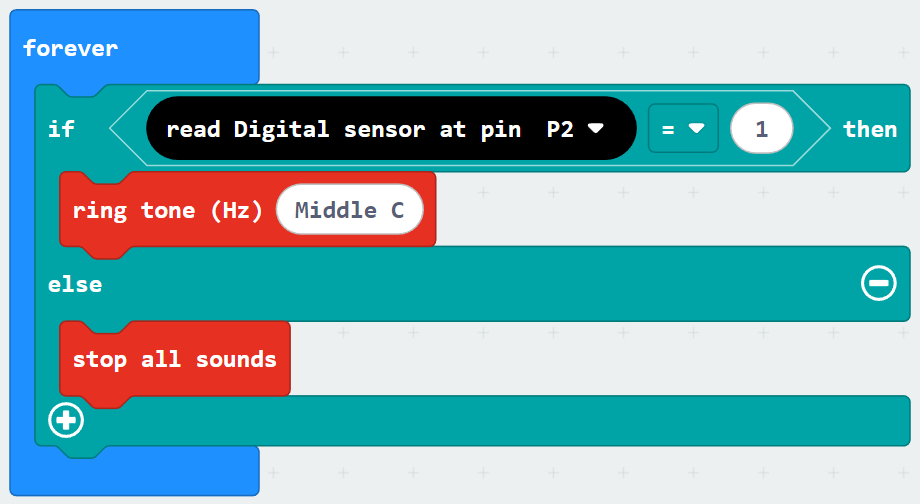Introduction: Security is important — whether it’s your bedroom, lab, or a storeroom.
In this project, we’ll build an Intruder Alarm using a BBC micro:bit, Bit-Z expansion board, and a PIR (Passive Infrared) motion sensor.
When movement is detected, the micro:bit will activate a buzzer or LED.
Learning Outcomes:
By completing this project, you’ll:
- Understand how a PIR sensor detects motion.
- Read digital signals from sensors using the micro:bit.
- Trigger outputs like buzzers or LEDs for alarms.
Components Needed:
- BBC micro:bit
- Bit-Z
- PIR Sensor Module
Circuit Connection:
On the Bit-Z board, we’ll connect:
PIR Sensor Module to P0/P1/P2
How It Works
- The PIR sensor detects infrared heat changes caused by movement.
- When motion is detected, it sends a HIGH signal to the micro:bit.
- The micro:bit turns on a buzzer/LED and shows an alert symbol.
- When no motion is detected, the alarm stops.
Code:

Possible Improvements:
- Add a delay so the alarm rings for a few seconds after detection.
- Send wireless alerts via Bluetooth to another micro:bit.
- Add a keypad or button to disarm the system.
- Control a relay to trigger real security lights.
Conclusion:
This Intruder Alarm project is a simple yet effective security system. With just a micro:bit, Bit-Z, and a PIR sensor, you can create a motion-based alert for your home, classroom, or lab.
